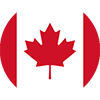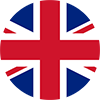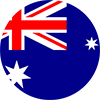How To Grow A Thicker Beard: The Complete Guide
Are you one of those individuals who dream of sporting a thick and masculine beard? You're not alone. Many men desire a fuller facial mane that exudes masculinity and confidence. While some men seem to effortlessly grow thick beards, others may struggle to achieve the same level of thickness. But fear not! With the right knowledge and approach, you can enhance your beard growth and achieve the thick beard you've always wanted.
In this comprehensive guide, we will delve into the world of beard growth, exploring natural ways to promote thickness, addressing common concerns such as patchiness, and providing styling tricks to help your beard appear fuller and more robust.
Does a Beard Ever Get Thicker?
Before we dive into the methods of growing a thicker beard, let's address a common question: Does a beard ever get thicker? The answer is a resounding yes. While genetics play a significant role in determining your beard's thickness, a beard can get thicker on its own. Some men may actually be able to have a thicker beard by just letting it grow out.
What Makes a Beard Thicker?
When growing your beard, it's essential to understand what factors contribute to its thickness. Genetics is the primary determinant of your beard's growth pattern and thickness. The genes inherited from your parents play a crucial role in determining the density and distribution of your facial hair. However, various lifestyle factors can also impact beard growth. These factors include diet, hydration, hormonal balance, sleep, stress levels, and skincare practices. Addressing these aspects can create an environment that promotes healthier and denser beard growth.
At What Age Do Beards Become Thick?
Beard growth patterns can vary significantly from person to person, making it challenging to pinpoint an exact age when beards become thick. However, as a general guideline, most men experience increased beard thickness during their late twenties to early thirties. This is the phase when testosterone levels tend to be at their highest, contributing to improved facial hair growth. However, it's important to note that every individual is unique, and some men may observe thicker beard growth at an earlier or later age. It's crucial to be patient and give your beard the time it needs to reach its full potential.
The Top 10 Natural Ways to Grow a Thicker Beard
If you're looking to enhance your beard thickness naturally, try incorporating the following tips into your routine:
A Healthy Diet
A healthy beard starts with a healthy body. Proper nutrition plays a vital role in promoting beard growth and thickness. Ensure your diet includes essential vitamins, minerals, and proteins necessary for optimal hair growth.
Foods rich in vitamins A, B, C, and E, as well as zinc, biotin, and omega-3 fatty acids, can nourish your beard follicles and promote healthy growth. Incorporate foods like eggs, fish, nuts, leafy greens, and fruits into your meals to provide your body with the building blocks it needs for robust beard growth.
Drink More Water
Hydration is key to overall hair health, including your beard. Drinking an adequate amount of water helps maintain optimal blood circulation, delivering essential nutrients to your hair follicles. Aim to drink at least eight glasses of water daily to keep your body and beard hydrated from the inside out.
Supplements
In addition to a nutrient-rich diet, certain supplements can support beard growth. B vitamins, particularly biotin, have been linked to hair health and growth. But before taking anything, consult with a healthcare professional to determine if supplements such as biotin or multivitamins suit you.
Get Better Sleep
Believe it or not, your sleep habits can affect beard growth. Adequate sleep and maintaining a regular sleep schedule help regulate hormone levels, including testosterone. Testosterone plays a vital role in facial hair growth, so getting enough quality sleep is essential. Aim for 7-9 hours of sleep per night and establish a consistent sleep routine.
This isn't just essential for beard health but overall health as well. Don't skip your sleep!
Stress Management
Chronic stress can disrupt hormone production, which can negatively impact hair growth, including your beard. Find healthy ways to manage stress, such as engaging in regular exercise, practicing mindfulness meditation, or pursuing hobbies you enjoy. Reducing stress levels creates a more conducive environment for healthy beard growth.
Exercise Regularly
Regular physical activity promotes blood circulation, delivering essential nutrients to your hair follicles. Incorporate exercise into your routine, whether it's cardio, weightlifting, or even yoga. Increased blood flow can potentially stimulate beard growth and thickness.
Skincare
To promote optimal beard growth, taking care of your skin is essential. Keep your face clean by washing it regularly with a gentle cleanser. Exfoliate once or twice a week to remove dead skin cells that can clog hair follicles. Moisturize your skin with beard oil or balm to prevent dryness and promote healthy hair growth.
Avoid Smoking
Smoking has numerous detrimental effects on overall health, including hair growth. The chemicals in tobacco smoke can impair blood circulation, limiting the nutrients and oxygen that reach your hair follicles. Quitting smoking can potentially improve beard growth and thickness, along with numerous other health benefits.
Being Patient
One of the most crucial aspects of growing a thicker beard is patience. Beard growth takes time, and each hair follicle operates on its unique growth cycle. Allow your beard to grow without trimming for a few months, even if it appears uneven or patchy at first. Getting past that initial stage is the hardest because it doesn't look great. Some areas may grow faster than others, and with time, the slower-growing regions will catch up, resulting in a fuller and thicker beard that you've always wanted.

Trimming and Shaping
Once your beard has reached a considerable length, you can trim and shape it to enhance its appearance. Regular trimming removes split ends, promotes even growth, and prevents your beard from looking unruly. Trim the faster-growing areas while allowing the slower-growing parts to catch up, achieving a more balanced and fuller beard over time.
An essential tool for any beadsman is a high-quality trimmer. Men with beards tend to have thicker hair, so don't go for one of those cheap trimmers at Walmart; you could end up pulling out hairs and ruining your precious beard you spent so long growing.
We recommend the Brio Beardscape. It says it right in the name, and it was specifically designed to be the ultimate trimmer for men. With over 24 blade adjustments, you are sure to get the perfect length, and it's also versatile enough to trim other areas of your body. So honestly, it will most likely be the last trimmer you buy. Check it out here.
How to Fill a Patchy Beard
Patchiness can be a common concern for many men attempting to grow a thick beard. If you find yourself with areas of sparse hair growth, there are strategies you can employ to make your beard appear much fuller:
- Train Your Hair: Regularly comb or brush your beard in the direction you want it to grow. By training the hair, you can help conceal patchy spots and encourage even growth.
- Styling Products: Utilize beard styling products to add texture and volume to your beard. Beard balms, waxes, and creams can help you create the illusion of thickness by shaping the hair and adding fullness to thin areas.
- Opt for Strategic Trimming: Skillful trimming can camouflage patchy areas. Experiment with different beard styles that play to your beard's strengths and help conceal the patchiness. For example, a slightly longer beard with well-defined lines can give the appearance of a fuller and denser beard.
- Embrace a Stubble Look: If the patchy areas are more noticeable when your beard grows out, consider maintaining a shorter stubble length. A well-groomed stubble can create a more uniform appearance and minimize the visibility of patchiness.
- Consider Beard Dye: If your patchy areas are lighter in color and stand out, you may opt for beard dye. Choose a shade that matches your natural hair color and apply it to the patchy areas to create a more uniform look.
- Seek Professional Advice: If patchiness persists despite your efforts, it may be beneficial to consult a professional barber or dermatologist. They can provide personalized guidance and recommend potential solutions tailored to your specific situation.
What Will Not Help You Grow a Thicker Beard
While there are various effective methods to enhance beard growth, some approaches may not yield the desired results. It's essential to separate fact from fiction to avoid wasting time and effort on ineffective strategies. Here are a couple of things that are commonly believed to help grow a thicker beard but may not be effective:
- Minoxidil/Finasteride: Minoxidil and finasteride are drugs initially developed to address hair loss concerns. While some individuals have reported increased beard growth when using these medications, they were not specifically designed for beard growth. People often see results initially but then loose those results once they stop taking the medication. It's crucial to consult with a physician before considering these drugs, as they may have potential side effects and may not be suitable for everyone.
- Shaving: The notion that shaving your beard will make it grow back thicker is a myth. Shaving has no impact on the thickness or density of your facial hair. It merely gives the appearance of a thicker beard due to the blunt ends of freshly cut hair. As your beard grows, it will regain its natural texture and density.
How to Style Your Beard to Appear Thicker
Since growing a thicker and fuller beard isn't always feasible for everyone, there are styling tricks you can employ to make your beard appear thicker and more voluminous. Here are a few techniques you can try:
- Train Your Hair: Regularly comb or brush your beard to train the hair to lie in the desired direction. This technique can help create the illusion of a thicker beard by redistributing hair from denser areas to cover any thinner spots.
- Utilize Styling Products: Various styling products can be beneficial in making your beard appear thicker. For instance, using beard balms, waxes, and even beard dye can give your beard a more structured and voluminous look. Additionally, products with a matte finish can create the perception of density, as they don't reflect light and make the hair appear fuller.
- Opt for Strategic Trimming: Trimming your beard with precision can help create a denser appearance. Focus on shaping the beard in a way that emphasizes its strengths and covers any thinner areas. A well-maintained and sculpted beard can give the illusion of thickness, even if the growth itself is not particularly dense.
Remember, styling your beard aims to create the illusion of thickness rather than attempting to change its natural growth pattern. Experiment with different techniques and products to find what works best for you and complements your facial features.
Conclusion
Growing a thicker beard is an achievable goal with the right knowledge and approach. While genetics primarily determine beard thickness, there are several natural ways to promote growth and enhance the density of your facial hair. By focusing on nutrition, hydration, sleep, stress management, and proper grooming practices, you can create an environment conducive to healthy beard growth.
Beard growth takes time and patience. It's normal for different areas of your beard to grow at varying rates, and filling in patchy spots may require creative styling techniques.
Whether you have a thick, full beard or neatly groomed stubble, Following the tips in this guide are sure to make it look a little more fuller and thicker. Happy growing!
Related Articles
How To Fix A Patchy Beard Fast: Step By Step
How To Shape A Beard For Your Face Shape: The Definitive Guide






